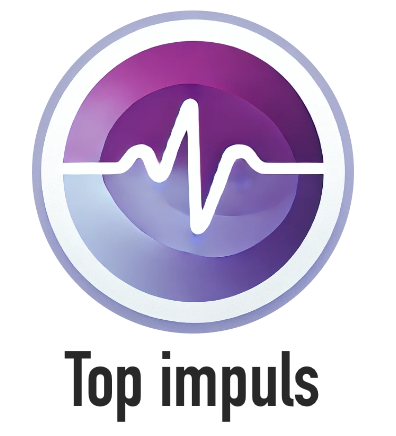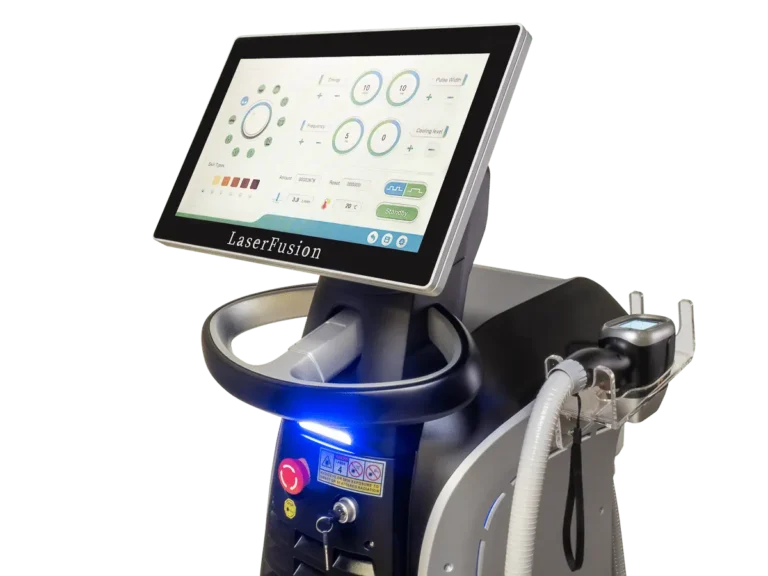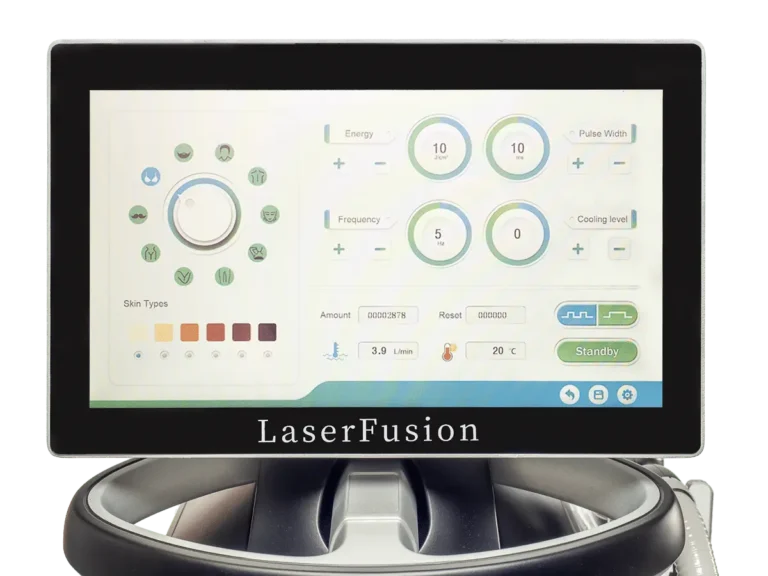In the ever-evolving world of healthcare, virtual reality (VR) has emerged as a revolutionary force, transforming the landscape of rehabilitation and patient care. As technology continues to advance, the integration of VR in modern rehabilitation practices has opened up a new frontier of possibilities, offering a myriad of benefits for both patients and healthcare providers.
From enhancing patient engagement and motivation to enabling personalized virtual experiences, VR has the power to redefine the rehabilitation journey, making it more immersive, interactive, and effective. By harnessing the versatility of this cutting-edge technology, healthcare professionals can now deliver tailored therapeutic interventions, measure progress with real-time feedback, and unlock a world of physical, cognitive, and psychological recovery opportunities.
Key Takeaways
- Virtual reality offers transformative benefits for modern rehabilitation practices, revolutionizing patient care and recovery processes.
- VR technology enhances patient engagement and motivation, enabling personalized virtual experiences for improved therapeutic outcomes.
- Real-time feedback systems in VR-based therapy provide valuable insights into patient progress, driving more effective and targeted interventions.
- The integration of VR in rehabilitation can lead to enhanced physical, cognitive, and psychological recovery, accelerating the path to rehabilitation success.
- VR-based therapy offers cost-effective and accessible solutions, optimizing healthcare resources and expanding the reach of rehabilitation services.
Understanding Virtual Reality in Modern Rehabilitation
The world of healthcare has witnessed a remarkable transformation with the integration of virtual reality (VR) technology. This innovative approach has revolutionized the way patients undergo rehabilitation, providing a more immersive and engaging experience. Let’s explore the evolution of VR in healthcare and the core components that make up VR rehabilitation systems.
Evolution of VR Technology in Healthcare
Virtual reality has come a long way since its early days. Initially, VR systems were bulky, expensive, and lacked the necessary computing power to deliver a truly immersive experience. However, the rapid advancements in technology, including the development of lightweight, high-resolution headsets and powerful graphics processing units, have made VR more accessible and user-friendly for healthcare applications.
Today, VR rehabilitation systems leverage these technological advancements to create adaptive environments that respond to the patient’s movements and interactions, providing a unique and personalized therapy experience. This evolution has opened up new avenues for healthcare providers to deliver more effective and engaging rehabilitation programs.
Core Components of VR Rehabilitation Systems
At the heart of VR rehabilitation systems are three key components:
- Virtual Reality Headsets: These immersive devices transport patients into a digital world, allowing them to fully engage with their rehabilitation exercises and tasks.
- Tracking Sensors: Strategically placed sensors monitor the patient’s movements, gestures, and interactions within the virtual environment, providing real-time feedback and data for clinicians to analyze.
- Interactive Exercises: The VR system incorporates a range of interactive exercises and tasks tailored to the patient’s specific needs, targeting various aspects of physical, cognitive, and psychological rehabilitation.
These components work in harmony to create adaptive environments that challenge patients, encourage their participation, and track their progress, ultimately leading to more effective rehabilitation outcomes.
| Component | Description |
|---|---|
| Virtual Reality Headsets | Immersive devices that transport patients into a digital world, enhancing their rehabilitation experience. |
| Tracking Sensors | Sensors that monitor patient movements, gestures, and interactions within the virtual environment, providing real-time feedback. |
| Interactive Exercises | Tailored exercises and tasks that challenge patients and target various aspects of their rehabilitation, including physical, cognitive, and psychological. |
Wat zijn de voordelen van virtual reality in revalidatie?
Virtual reality (VR) has emerged as a transformative technology in the field of rehabilitation, offering a range of advantages that can significantly enhance the recovery process. As the healthcare industry increasingly embraces gamified recovery, augmented healing, and engaging rehabilitation solutions, the integration of VR has become a game-changer.
One of the primary benefits of VR in rehabilitation is its ability to captivate patient attention and promote active engagement. By immersing individuals in interactive, virtual environments, VR can stimulate cognitive, physical, and sensory responses, leading to a more engaging rehabilitation experience. This heightened level of engagement not only enhances motivation but also facilitates the development of essential skills, such as balance, coordination, and motor function.
Furthermore, VR-based rehabilitation allows for the creation of personalized treatment plans tailored to the unique needs and abilities of each patient. By leveraging the customizable nature of virtual environments, therapists can design immersive scenarios that challenge individuals in a safe and controlled manner, promoting gamified recovery and augmented healing.
| Benefit | Description |
|---|---|
| Enhanced Patient Engagement | VR-based rehabilitation captivates patient attention, leading to increased motivation and active participation in the recovery process. |
| Personalized Treatment Plans | Virtual environments can be customized to meet the specific needs and abilities of each patient, enabling gamified recovery and augmented healing. |
| Improved Rehabilitation Outcomes | The immersive and interactive nature of VR can contribute to better physical, cognitive, and functional outcomes for patients undergoing rehabilitation. |
By harnessing the power of VR, rehabilitation professionals can provide patients with a more engaging rehabilitation experience, promote gamified recovery, and facilitate augmented healing, ultimately leading to enhanced recovery outcomes and improved quality of life for individuals undergoing rehabilitation.
Enhanced Patient Engagement Through Immersive Environments
Virtual reality (VR) technology has revolutionized the field of rehabilitation by creating highly immersive therapy experiences that significantly boost patient engagement. By transporting patients into captivating virtual worlds, VR enables a level of interactivity and immersion that traditional rehabilitation methods often struggle to achieve.
Gamification Elements in Recovery Process
One of the key ways VR enhances patient engagement is through the incorporation of gamification elements into the rehabilitation process. Patients are presented with interactive challenges, rewards, and feedback systems that make the recovery journey more enjoyable and motivating. This gamified approach taps into the natural human desire for achievement, allowing patients to actively participate in their own motivational rehabilitation.
Motivation and Achievement Tracking
VR-based rehabilitation systems often include robust data-tracking capabilities that monitor patient progress, milestones, and achievements. Patients can visualize their improvements over time, fostering a sense of accomplishment and driving them to continually push their boundaries. This engaging rehabilitation experience empowers patients to stay motivated and invested in their recovery journey.
Creating Personalized Virtual Experiences
The adaptability of VR technology allows healthcare providers to tailor virtual environments and tasks to the unique needs and preferences of each patient. By creating personalized virtual experiences, patients feel a stronger connection to the rehabilitation process, leading to enhanced engagement and better overall outcomes.
Measuring Progress with Real-Time Feedback Systems
Virtual reality (VR) physiotherapy is revolutionizing the way we approach rehabilitation. One of the standout features of these interactive exercises is the real-time feedback systems that allow both therapists and patients to track progress with unparalleled precision.
These adaptive environments provide a wealth of data, enabling healthcare professionals to make immediate adjustments to treatment plans. By monitoring patients’ movements, cognitive engagement, and goal achievement in real-time, they can set achievable milestones and ensure the therapy remains tailored to individual needs.
The integration of sensors and data analytics in VR rehabilitation systems offers several key benefits:
- Accurate tracking of patient progress, from motor skills development to balance and coordination improvements.
- Instant feedback on the effectiveness of specific interactive exercises, allowing for timely refinements.
- Personalized goal-setting based on the patient’s unique capabilities and response to the adaptive environments.
By leveraging these real-time insights, therapists can optimize the VR physiotherapy experience, fostering better patient engagement and enhancing the overall rehabilitation journey.
| Metric | Traditional Therapy | VR-Based Rehabilitation |
|---|---|---|
| Progress Tracking | Periodic assessments | Continuous real-time monitoring |
| Feedback Frequency | Delayed, after sessions | Immediate, during sessions |
| Goal Adjustment | Limited, based on periodic reviews | Dynamic, based on real-time data |
The seamless integration of real-time feedback systems in VR-based rehabilitation empowers therapists and patients alike, transforming the recovery process into a more engaging, personalized, and effective journey.
Physical Recovery Benefits in VR-Based Therapy
Virtual reality (VR) rehabilitation has emerged as a transformative approach in the field of physical therapy, offering a host of benefits for patient recovery. Two key areas where VR shines are in the development of motor skills and the enhancement of balance and coordination.
Motor Skills Development
VR-based virtual reality rehabilitation exercises provide patients with immersive, interactive experiences that challenge and refine their motor skills. By engaging in targeted VR physiotherapy activities, patients can work on improving hand-eye coordination, dexterity, and overall muscle control. The interactive nature of these virtual reality rehabilitation exercises encourages active participation, leading to tangible improvements in motor function.
Balance and Coordination Improvements
VR therapy also excels at enhancing balance and coordination in patients undergoing physical rehabilitation. Through the use of interactive exercises in a virtual environment, individuals can practice complex movements and balance tasks in a safe, controlled setting. The feedback and real-time adjustments provided by the VR system help patients develop better proprioception, stability, and overall coordination, crucial for regaining independence and quality of life.
The integration of virtual reality into physical therapy has revolutionized the rehabilitation landscape, empowering patients to make remarkable strides in their recovery. By leveraging the immersive and engaging nature of VR, healthcare providers can now deliver more effective, personalized virtual reality rehabilitation programs that drive tangible improvements in motor skills, balance, and coordination.
Cognitive Rehabilitation Through Virtual Reality
In the realm of modern rehabilitation, virtual reality (VR) has emerged as a powerful tool for addressing cognitive challenges faced by patients. By immersing individuals in engaging, adaptive environments, VR-based therapies can facilitate augmented healing and provide a unique approach to engaging rehabilitation.
One of the key benefits of VR in cognitive rehabilitation is its ability to enhance memory and attention skills. Through interactive scenarios, patients can improve their capacity to remember vital information, focus their attention, and sharpen problem-solving abilities. This is particularly valuable for individuals recovering from traumatic brain injuries, strokes, or neurological disorders.
- Memory improvement: VR environments can be tailored to stimulate and challenge the patient’s memory, helping them retain crucial information and recall past events more effectively.
- Attention training: VR-based exercises can be designed to improve the patient’s ability to focus, filter out distractions, and maintain sustained attention during rehabilitation activities.
- Problem-solving skills enhancement: By navigating complex virtual scenarios, patients can develop and hone their problem-solving abilities, which are essential for regaining independence and adapting to new challenges.
Moreover, the immersive nature of VR can create a sense of engagement and motivation, encouraging patients to actively participate in their cognitive rehabilitation journey. The integration of gamification elements and real-time feedback systems further enhances the patient’s experience, making the rehabilitation process more enjoyable and interactive.
| Cognitive Benefit | VR-based Rehabilitation Approach |
|---|---|
| Memory Improvement | Tailored virtual scenarios to stimulate and challenge the patient’s memory |
| Attention Training | VR-based exercises designed to improve focus and filter out distractions |
| Problem-solving Skills Enhancement | Navigation of complex virtual scenarios to develop problem-solving abilities |
By harnessing the power of virtual reality, healthcare providers can offer patients a transformative cognitive rehabilitation experience that not only addresses specific challenges but also fosters a sense of engagement and motivation throughout the recovery process.
Cost-Effectiveness and Accessibility of VR Rehabilitation
As virtual reality (VR) technology continues to advance, its applications in the field of rehabilitation are becoming increasingly cost-effective and accessible. From remote therapy possibilities to resource optimization for healthcare providers, VR is revolutionizing the way patients receive treatment and recover from various medical conditions.
Remote Therapy Possibilities
One of the key advantages of VR rehabilitation is its ability to provide remote therapy options. Patients can now engage in immersive virtual therapy sessions from the comfort of their own homes, reducing the need for frequent in-person visits and transportation costs. This not only increases accessibility for those living in remote areas or with limited mobility but also allows healthcare providers to reach a wider patient population efficiently.
Resource Optimization for Healthcare Providers
The integration of virtual reality rehabilitation into traditional rehabilitation methods can also lead to significant resource optimization for healthcare providers. By leveraging the interactive and gamified recovery features of VR, healthcare professionals can create personalized treatment plans that improve patient engagement and motivational rehabilitation. This, in turn, can lead to better treatment outcomes, reduced hospital stays, and more efficient utilization of healthcare resources.
Additionally, VR-based rehabilitation systems can collect real-time data and provide valuable insights into patient progress, allowing healthcare providers to make informed decisions and optimize their treatment approaches. This data-driven approach can contribute to the overall cost-effectiveness of VR-based rehabilitation, making it a more viable and accessible option for a wider range of patients.
Integration of VR in Traditional Rehabilitation Methods
As virtual reality (VR) technology continues to evolve, its integration with traditional rehabilitation methods has become a game-changer in the healthcare industry. By combining the immersive experiences of immersive therapy with the proven techniques of conventional VR physiotherapy, healthcare providers can now offer patients a comprehensive and engaging recovery journey.
One of the key benefits of this integration is the ability to create personalized rehabilitation plans that cater to each patient’s unique needs and preferences. Clinicians can seamlessly incorporate interactive exercises within the VR environment, allowing patients to actively participate in their recovery process and stay motivated throughout their treatment.
Moreover, the synergy between VR and traditional methods enhances the overall effectiveness of rehabilitation programs. Patients can engage in real-time feedback and progress tracking, enabling healthcare providers to make data-driven adjustments to their treatment plans. This optimization ensures that each patient receives the most targeted and efficient care, ultimately leading to better outcomes.
By embracing the integration of VR and traditional rehabilitation, healthcare professionals can unlock a new era of personalized, engaging, and effective patient care. This innovative approach not only empowers patients to take an active role in their recovery but also equips clinicians with the tools they need to deliver truly transformative rehabilitation experiences.
Conclusion
As we’ve explored, virtual reality (VR) has emerged as a transformative technology in the field of rehabilitation, offering a range of benefits that can significantly enhance patient engagement, recovery, and overall well-being. From engaging patients through immersive environments and gamification to providing real-time feedback and tracking progress, VR has proven to be a powerful tool in facilitating more effective and personalized rehabilitation processes.
The integration of VR in traditional rehabilitation methods has yielded impressive results, from improved motor skills and balance to enhanced cognitive rehabilitation. Moreover, the cost-effectiveness and accessibility of VR-based therapy, including remote therapy possibilities, have made it an increasingly attractive option for healthcare providers and patients alike. As the technology continues to evolve, the future of virtual reality in rehabilitation holds immense potential, promising to revolutionize the way we approach patient care and deliver more engaging, effective, and personalized recovery journeys.
Ultimately, the advantages of virtual reality in rehabilitation, as highlighted by its ability to boost patient engagement, drive physical recovery, and enable cognitive rehabilitation, underscore its crucial role in transforming the rehabilitation landscape. As healthcare systems and providers continue to embrace this innovative approach, the benefits of virtual reality rehabilitation will continue to be realized, leading to improved patient outcomes and a more holistic approach to the rehabilitation process.








